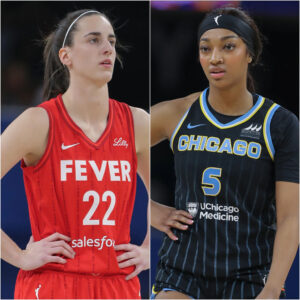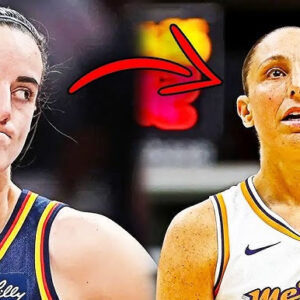Thank you, Caitlin Clark, for a rookie season that elevated the WNBA
I called a longtime friend the other day, a fellow sports fan, to catch up, and we spent the first 20 minutes talking about women’s professional basketball.
Neither of us had ever exhibited the slightest interest in the WNBA, but both of us, simultaneously, unbeknownst to the other, had become Caitlin Clark fans.
There are transformational players who change the competitive balance in a league or change how the game is played, but it’s rare to come across players who lift an entire league on their shoulders.
There was much knowing chatter when Clark entered the WNBA that she was in for a rude awakening after her historic college career, that she wouldn’t look so special against the best women players in the world.
And, yes, there was a period of adjustment, but as the WNBA regular season ends and the playoffs begin, we can say the Clark doubters have been proved categorically wrong.
Infamously, Geno Auriemma, the storied coach of the University of Connecticut women’s team, said back in June, “The delusional fanbase that follows her disrespected the WNBA players by saying she’s going to go in that league and tear it apart.”
Delusional? Clark has had the best rookie season in WNBA history and turned everything she’s touched to ratings or attendance gold.
For all the jealousy and even hostility she’s elicited from other WNBA players, Clark is doing them all a favor.
The WNBA could have had an unlimited advertising and marketing budget and not produced anything like the results of simply putting “C squared” on the court. Caitlin Clark reacts in the second half of a game between the Indiana Fever and the Phoenix Mercury on Aug. 16, 2024.Getty Images
Caitlin Clark reacts in the second half of a game between the Indiana Fever and the Phoenix Mercury on Aug. 16, 2024.Getty Images
With Clark, the everyday is extraordinary. For the final game of the season against the Fever, the unremarkable Washington Mystics moved the event to the NBA arena and drew 20,711, the most for a game in WNBA history.
The Mystics usually play in an arena with a capacity of 4,200.
The Indiana Fever averaged 17,000 attendees per home game and 15,000 on the road; both are more than any other team by a healthy margin.
When the team shows up in an opposing arena, often a lion’s share of the fans are rooting for Clark, not the home team.
The Ion network, which broadcasts WNBA games, saw its ratings increase 133% from a year ago, to 670,000 per game.
It benefited from broadcasting seven games with more than a million viewers, all involving the Indiana Fever. Notably, viewership among men aged 25 to 54 increased 181%.
Clark finished the season tied for seventh most points per game and led the league in assists per game. She set rookie records for total points in a season, assists per game, and three-pointers made.
She’s the only rookie ever with a triple-double — and she did it twice.
She scored the second-most three-pointers ever in a season, falling just short of the all-time record.
WNBA legend Sheryl Swoopes, who has never sounded overly enamored with Clark, recently said that the Fever star wasn’t yet “dominating” the league.
Perhaps, but Clark’s numbers match or eclipse those that Swoopes amassed in her MVP seasons.
Swoopes, for instance, averaged 18.5 points, 3.3 assists, and 4.9 rebounds per game in 2002. Clark averaged 19.5 points, 8.4 assists, and 5.7 rebounds per game this year — and, again, she’s a rookie.
Clark is a fierce competitor on the court and a modest voice off it, constantly expressing — and showing — deep gratitude for her rock-star-like following.
She’s a role model in every way for her young fans, and her older ones can marvel at her skills while appreciating her class.
The Fever are making their first playoff appearance since 2016, after starting the season a woeful 1-8. They might be bounced quickly, but after an incredible post-Olympic-break surge, who knows?
Regardless, for sports fans along for the thrilling ride and WNBA players and executives benefiting from the boost to their business, the universal sentiment should be, “Thank you, Caitlin Clark.”
Relative Articles
None found





